 From:
From:
9(2)(a)
To:
s9(2)(a)
Cc:
9(2)(a)
Subject:
Livestock Export by Sea Guidelines
Date:
Friday, 16 February 2024 2:59:54 PM
This information is publicly available:
Attachments:
image001.png
https://www.mpi.govt.nz/
Livestock-Export-by-Sea-Guidance-for-Cattle-for-Webservices-PDF.pdf dmsdocument/911-Livestock-Export-
by-Sea-Guidance-for-Cattle-
Hi s9(2)(a)
I understand that it would be helpful for you to have the previous Guidelines for the Export of
Livestock by Sea (see attached). This was the version that was in use prior to the prohibition.
Ngā mihi,
9(2)
( )
9(2)(a)
| Manager, Animal Health & Exports
Animal Health & Welfare | Agriculture & Investment services – Tapuwae Ahuwhenua
Ministry for Primary Industries - Manatū Ahu Matua | Charles Fergusson Building | 34-38 Bowen Street | PO Box 2526 |
Wellington | New Zealand
Telephone: 9(2)(a)
| Web: www.mpi.govt.nz
l Information Act 1982
the Off
un
Released
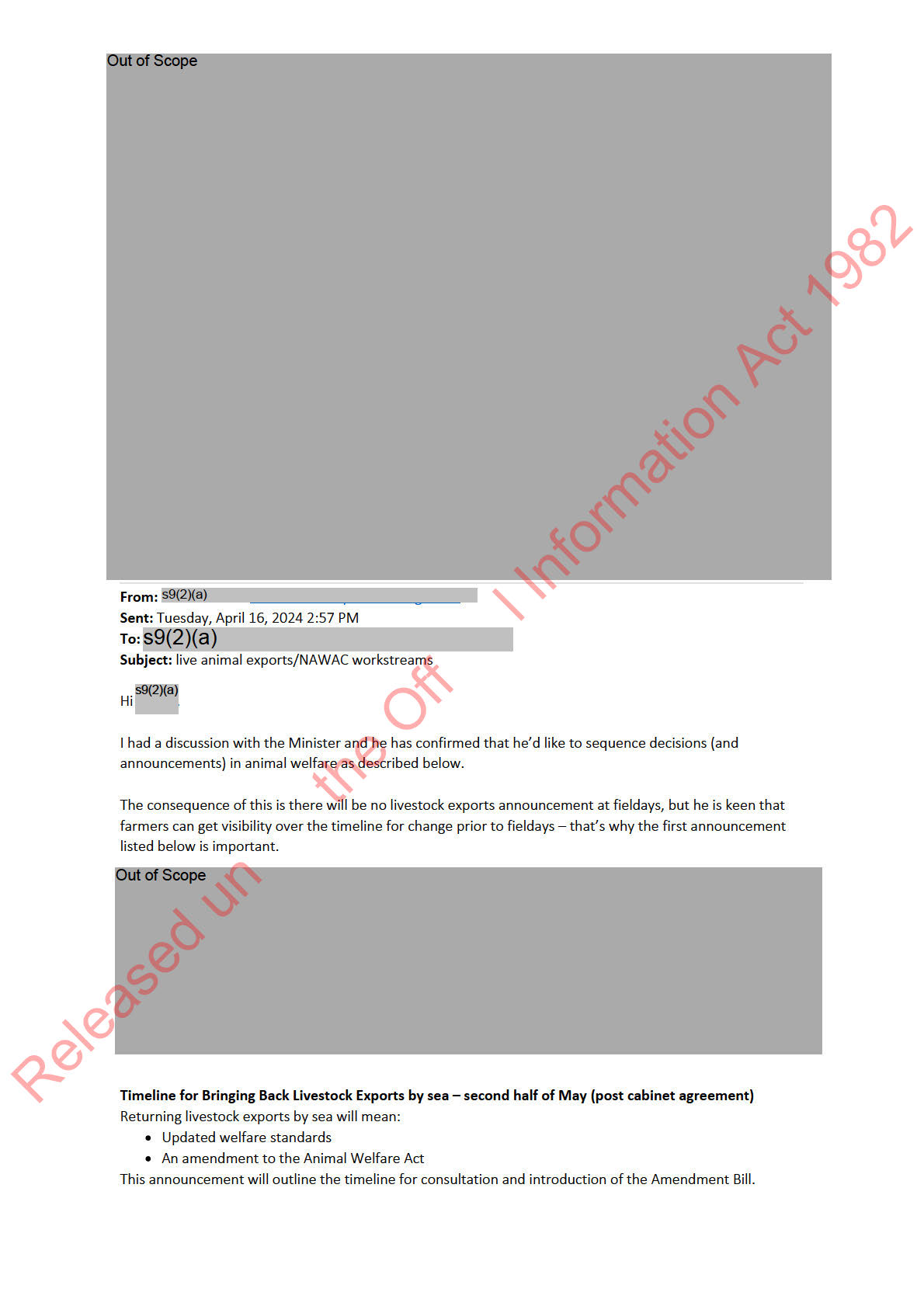
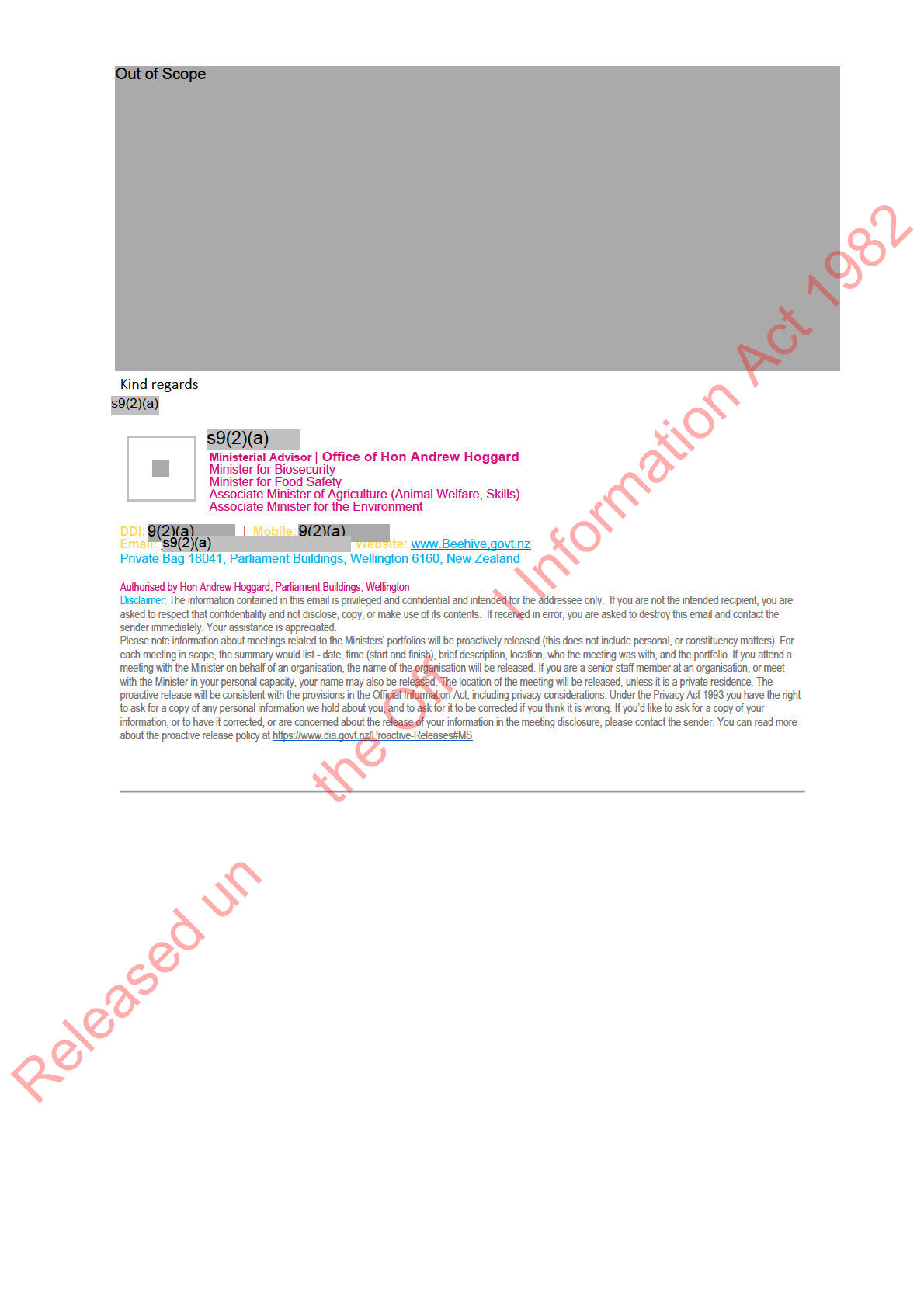
 From:
From:
s9(2)(a)
To:
Carolyn Guy; Fiona Duncan; 9(2)(a)
Subject:
FW: COR395 FW: RNZSPCA submission to MPI Targeted Engagement on Live Export
Date:
Tuesday, 21 May 2024 8:11:00 AM
Attachments:
image001.jpg
RNZSPCA Targeted Consultation Feedback - MPI Live Export 03.05.24.pdf
WOAH Sea Transport Chapter ICFAW comments for revision final 26.01.2024.pdf
2024-04-03 RSPCA submission re Independent Observer Program IGAWLAE.pdf
image002.jpg
FYI – office will just send an acknowledgement.
Cheers
s9(2)
(a)
From: Andrew Hoggard (MIN) <[email address]>
Sent: Monday, May 20, 2024 8:36 AM
To: s9(2)(a)
Subject: FW: COR395 FW: RNZSPCA submission to MPI Targeted Engagement on Live Export
Hi,
We received this advice from 9(2)(a)
regarding Live Animal Exports. I assume a general
acknowledgment should be fine as a response but let me know.
l Information Act 1982
I will also note this for the Live Animal Export OIAs/WPQs that we may receive in the future.
Thanks,
s9(2)(a)
Private Secretary (Administration) |
Office of Hon Andrew Hoggard
Minister for Biosecurity
Minister for Food Safety
Associate Minister of Agriculture (Animal Welfare, Skills)
s9(2)(a)
the Off
Associate Minister for the Environment
Email:
| Website: www.Beehive,govt.nz
Private Bag 18041, Parliament Buildings, Wellington 6160, New Zealand
9(2)(a)
9(2)(a)
Authorised by Hon And ew Hoggard, Parliament Buildings, Wellington
un
Disclaimer: The information contained in this email is privileged and confidential and intended for the addressee only. If you are not the intended
recipient, you ar asked to respect that confidentiality and not disclose, copy, or make use of its contents. If received in error, you are asked to
destroy th s email and contact the sender immediately. Your assistance is appreciated.
Please note information about meetings related to the Ministers’ portfolios will be proactively released (this does not include personal, or
constituency matters). For each meeting in scope, the summary would list - date, time (start and finish), brief description, location, who the meeting
was with, and the portfolio. If you attend a meeting with the Minister on behalf of an organisation, the name of the organisation will be released. If
you are a senior staff member at an organisation, or meet with the Minister in your personal capacity, your name may also be released. The
location of the meeting will be released, unless it is a private residence. The proactive release will be consistent with the provisions in the Official
Information Act, including privacy considerations. Under the Privacy Act 1993 you have the right to ask for a copy of any personal information we
hold about you, and to ask for it to be corrected if you think it is wrong. If you’d like to ask for a copy of your information, or to have it corrected, or
are concerned about the release of your information in the meeting disclosure, please contact the sender. You can read more about the proactive
release policy at https://www.dia.govt.nz/Proactive-Releases#MS
Released
From: 9(2)(a)
@spca.nz>
Sent: Friday, May 17, 2024 7:03 PM
To: Andrew Hoggard (MIN) <[email address]>
Subject: COR395 FW: RNZSPCA submission to MPI Targeted Engagement on Live Export

Dear Andrew,
We are really keen to work with you and be completely transparent and operate on a no-
surprises rule.
We are engaging with MPI on live exports and have a had a couple of meetings with them
already and will continue to work collaboratively with them on this issue.
Following our meetings, they asked if we would like to submit anything in writing which we
took up (of course) and I have attached for you.
I have also attached the following as it may be useful information for you:
1. The International Coalition For Animal Welfare (ICFAW) feedback on WOAH’s transport by
sea chapter. We are a member of ICFAW.
2. RSPCA Australia’s feedback on their recent Independent Observer Programme review.
Any questions at all, please let me know.
Have a lovely weekend.
Ngā mihi,
l Information Act 1982
9(2)(a)
9(2)(a)
SPCA | National Support Office | 199 Lincoln Road |
Henderson |0610
PO Box 15349 | New Lynn | Auckland | 0640 | New
Zealand
the Off
P: +64 9 827 6094 | Cell: 9(2)(a) | DD: 9(2)(a)
E: 9(2)(a) @spca.nz
| W: www.spca.nz
Make flexibility work - if you receive an email from me outside of normal business hours, I am sending it at a time
that suits me. Unless I’ve marked it urgent, I'm not expecting you to read or reply until you can during normal
un
business hours,
From: 9(2)(a)
Sent: Friday, May 17, 2024 6:38 PM
To: 9(2)(a)
@mpi.govt.nz>
Subject: RNZSPCA submission to MPI Targeted Engagement on Live Export
Importance: High
Released
Dear 9(2)
(a)
I hope that all is well with you.
Please find attached our SPCA submission to the MPI Targeted Engagement on Live Export.

I have also attached the following as we promised to share these with you:
1. ICFAW feedback on WOAH’s transport by sea chapter
2. RSPCA Australia’s feedback on their recent Independent Observer Programme review
Any questions at all, please let me know.
Have a lovely weekend.
Ngā mihi,
9(2)(a)
9(2)(a)
SPCA | National Support Office | 199 Lincoln Road |
Henderson |0610
PO Box 15349 | New Lynn | Auckland | 0640 | New
Zealand
P: +64 9 827 6094 | Cell: 9(2)(a)
| DD: 9(2)(a)
E: 9(2)(a) @spca nz
| W: www.spca.nz
Make flexibility work - if you receive an email from me outside of normal business hours, I am sending it at a time
that suits me. Unless I’ve marked it urgent, I'm not expecting you to read or reply until you can during normal
l Information Act 1982
business hours.
the Off
un
Released
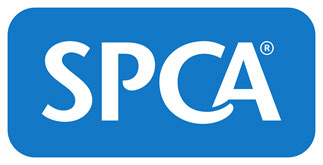 Targeted Consultation Feedback on Livestock Export by Sea:
Issues with Reinstating
3 May 2024
Targeted Consultation Feedback on Livestock Export by Sea:
Issues with Reinstating
3 May 2024
Background
• At a meeting on 15 April 2024, the Ministry for Primary Industries (MPI) invited feedback on
what we see as the key welfare issues when reinstating livestock exports by sea and how/if
this can be done in a way that is feasible and achieves the highest animal welfare standards.
• The following feedback is from SPCA. SPCA is the preeminent animal welfare and advocacy
organisation in New Zealand. The Society has been in existence for over 150 years with a
supporter base representing many more than 100,000 New Zealanders. The organisation
includes 28 Animal Welfare Centres across New Zealand and approximately 60 inspectors
l Information Act 1982
appointed under the Animal Welfare Act 1999.
• SPCA opposes plans to reinstate the export of farmed animals by sea due to the inherent
welfare issues associated with the practice (SPCA, n.d.). SPCA has been opposed to livestock
exports by sea for both slaughter and breeding for as long as the practice has been
undertaken from New Zealand: for example, our organisation raised public awareness
against live sheep exports for slaughter from the early 1970s (Griggs, 2016). We are unified
with SPCA’s internationally in our stance, and SPCA New Zealand will continue to campaign
against the practice for as long as it takes.
the Off
• SPCA has already provided multiple recent submissions on this topic, for example in 2019 on
MPI’s public consultation on the livestock export review and in 2021 on the Select
Committee consultation for the Animal Welfare Amendment Bill (SPCA, 2021). Our position
has not changed and these documents can be referred to for additional information.
un
• The following document will focus on SPCA’s overall view of the process for past and future
consultation, and our answers to the questions posed by MPI.
General Comments
Process and transparency
1. The Ministry has emphasised that no decisions have yet been made, and that animal
Released
advocacy stakeholders should consider all options open and every avenue up for discussion.
2. SPCA appreciates the intent of these statements but suggests that there are inconsistencies
with this statement when we are aware that MPI and industry have already met weekly,
1
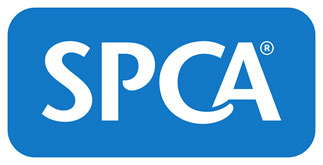
over the period of the two-year phase-out, to work on the exact topic being raised now:
higher animal welfare standards for livestock export by sea. These meetings of the
MPI/Industry working group did not appear to include animal welfare scientists, despite the
Heron review stating that any review of standards should “expressly seek input from animal
welfare scientists”.
3. Industry has confirmed in public statements and directly to SPCA that there was also close
collaboration and partnership between MPI and export stakeholders to develop a
‘regulatory framework’ often termed the ‘gold standard’ (“Gold Standard Animal Exports
Back on the Table,” 2023; Scott, 2023). The gold standard seems to have been discussed at
meetings and workshops convened, chaired and with an action register held by MPI. We
understand that aspects of this standard were piloted in April 2023, just before the ban
came into effect. MPI documents appear to state that MPI was responsible for organising
and discussing the potential for a gold standard pilot with the exporter, and that a National
MP was in attendance for the loading (although there were risks identified with inviting
“other leaders”). The term ‘gold standard’ is also used currently by the Agriculture Ministers
(Desmarais, 2024; Owen, 2024).
l Information Act 1982
4. SPCA has made an Official Information Act request from Minister Hoggard’s office for the
briefing titled
“B24-0118: Process for reinstating the livestock export by sea trade 19
February 2024”, the title of which indicates that some decisions have been progressed, and
the request was declined in its entirety under 9(2)(f)(iv). An Ombudsman complaint has
been lodged. We were encouraged by MPI committing to exploring the proactive release of
process documents at a meeting on 23 April 2024.
5. Generally speaking, SPCA works closely and collaboratively with the Ministry for Primary
Industries across many areas, from science to emergency management to enforcement. Our
the Off
organisation partners with industry to improve animal welfare, works with farmers daily as
part of SPCA Certified, and takes an evidence-based approach to any advocacy and
intervention Our animal welfare scientists regularly provide advice to Ministers and MPI on
animal welfare and proposed legislation. We’ve been disappointed to be shut out of
un
conversations and opportunities to submit on guidance documents for livestock export by
sea, and poultry export by air - but we hope to be considered a key stakeholder for MPI on
live animal exports in future.
Format of discussion document
6. SPCA was encouraged to hear Minister McClay state that
“in the development of the
regulations and how this would work, there is a very open mind,” at the Primary Production
Select Committee (Desmarais, 2024), and from Minister Hoggard that
“what we’ll be doing is
Released
we’ll have a full submission process. We’ll be taking into account all those submissions
there.” (Primary Production Committee, 2024)
.
2
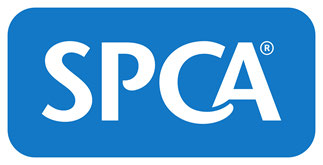
7. SPCA interprets these statements, and MPI’s repeated reassurance that we are starting from
a ‘blank sheet of paper’, to mean that MPI will not rely on the past work of the MPI/Industry
working group when coming up with regulations and other standards.
8. We have been advised by the Director of Animal Health and Welfare that the ‘gold standard’
refers to an industry-led concept which had no oversight from MPI. Therefore, we consider it
would be inappropriate to consult on those standards from here. We anticipate that eithe a
consultation will be held to ask the public what form new regulations should take, or MPI
Act 1982
would start developing new regulations from scratch to consult on in future. SPCA would be
very concerned to see the outcome of past MPI/Industry working groups and workshops
on
used in any future public consultation document.
9. We note that there is significant public interest in the ban on livestock export by sea, with
thousands of submissions into the public consultation processes between 2019 and 2021.
The summaries of submissions state that most submitters supported a ban on livestock
exports in 2019, and that 81% of submitters supported the ban in 2021 (Ministry for Primary
Industries, 2020, 2022).
10. Therefore SPCA considers that the status quo must be an option consulted on in any future
consultation, i.e. that the public must be asked whether they would like to see the
continuation of the ban. A description of the status quo is a normal and encouraged
inclusion for discussion documents in New Zealand (New Zealand Treasury, 2019).
Species covered by live export rules
11. MPI clarified in the April 15 h meeting that the proposed repeal of the live export ban will
apply to those species currently protected; cattle, sheep, goats and deer.
12. Despite the planned repeal including all four species, MPI clarified that the scope of the
targeted consultation did not include representatives of sheep, goat or deer industries. SPCA
notes that there are currently no New Zealand-specific guidance documents for sheep,
goats, or deer and we are unaware of any work done to explore ‘higher welfare’ for these
species under the Official Inform
13. We argue that, if a repeal of live export ban is a predetermined conclusion, this should only
extend to cattle as this is the only species for which evidence and engagement has been
sought.
14. We note that, due to issues such as spontaneous abortions and mortalities, Australia has
effectively ceased the export of goats by sea due to the welfare and mortality history of the
goat trade. ASEL prohibits sea transport of goats ≥10 days (1.6.1) (Australian Department of
Released
Agriculture, 2022; Collins et al., 2018; More & Brightling, 2003).
15. During MPI’s 2019 consultation on livestock export, Deer Industry New Zealand supported a
ban on live export of deer due to the significant welfare risks that it said cannot be mitigated
3
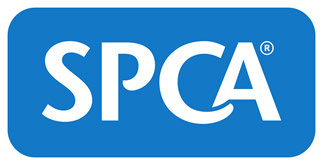
en-route nor at the destination counties. They said live deer exports would risk damaging
the industry’s reputation. “The deer industry can gain equivalent commercial benefits from
exporting semen and embryos.” (Ministry for Primary Industries, 2020).
16. In terms of expanding export regulations, SPCA notes that a key theme raised by multiple
submitters on the previous consultations in 2019 and 2021 was the narrowness of the scope
when considering the species protected by a live export ban. Multiple submitters felt that
the scope needed to be widened to include other sentient species – for example that Act 1982
additional consideration must be given to the live export of crayfish, day-old chicks and
native eels. Any future discussion document may wish to address this concern
on
Specific Questions
What do you see as the key welfare areas where standards can/should be improved
during live animal exports?
17. We recommend that the Ministry reviews the available literature and considers the risks
through the Five Domains model; this information could be included in public consultation.
SPCA is happy to assist with this.
18. SPCA has highlighted the key welfare risks of livestock export by sea below, summarised
from the available science. This is not an exhaustive list. For the most part we do not
consider that these risks can be sufficiently improved.
• The transportation of l vestock animals by sea is inherently linked with major animal
welfare compromise (Hing et al., 2021), particularly in regard to changes in feed,
poor environmental conditions, stocking densities, damaging ammonia
concentrations, disease, noise, motion sickness, changes in lighting pattern and heat
stress (Phillips, 2008).
• It is generally accepted that the longer and more complex the journey an animal
under the Official Inform
makes, the greater the risk to its welfare (Fisher, 2013). Sea transport must be
considered as part of a much longer transport process including mustering,
transport to PEI facilities, loading onto the ship, offloading and quarantine at the
other end, and finally transport to their final location (Phillips & Santurtun, 2013). As
stated by (Nielsen et al., 2022) among the additional hazards and concerns for
animal welfare transport by sea are microclimatic conditions during the waiting time
in ports and post-journey handling. Transport time for breeding animals should
always be kept to a minimum, for example by using air transport.
Released • Heat stress in transport by sea is a significant animal welfare concern (Caulfield et
al., 2014; Hing et al., 2021; Nielsen et al., 2022). Temperatures easily reach 35
degrees when crossing the equator, but cows start experiencing heat stress from as
4
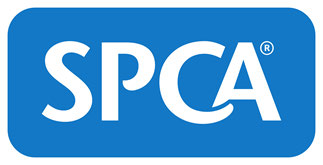
low as 20 degrees (e.g. according to DairyNZ). This risk therefore cannot be
mitigated without huge investment into systems such as dehumidification or air
conditioning. This technology has been tested for sheep in Australia, in a multi-
million dollar publicly funded trial. It found that to meaningfully and effectively
reduce stress risk for sheep on board, the dehumidification capacity used in the field
trial would need to be tripled. However, current technology does not appear to be
able to achieve this capacity in air flow and there are significant commercial and
Act 1982
logistical restraints on developing the technology (Australian Livestock Export
Corporation Ltd, 2019).
on
• Pregnant animals are at additional welfare risk. Pregnancy is a physiological demand
for any animal and entails specific needs on the environment and nutrient supply –
and transport is known to be a stressor for animals and entails food and water
deprivation. “The result is that pregnant animal subjected to transport stress simply
needs more energy to maintain two body systems (one’s and the fetus), to
accumulate some for calving, and simultaneously to adapt to new conditions
associated with transportation and new environment.” (Kukharenko & Fedorova,
2018). Pregnant animals are at a higher risk of welfare and health problems during
or following transport related stresses. They “have a restricted capacity to adapt to
demands placed on them by transport” (Adams, 1994) and are “more adversely
affected by confined conditions and poor ventilation.” (Scientific Committee on
Animal Health and Animal Welfare, 2002). Long-term transportation stress may lead
to abortions, stillbirths, weaker calves, or disease and death of the mother, shortly
or even weeks after arrival at the place of destination.
• Restricted lying behaviour is a welfare risk on ships. Cattle are highly motivated to lie
down (Tucker et al., 2021). They show rebound lying behaviour after periods of
forced standing. Lameness is increased in environments where lying behaviour is
thwarted. Hard or wet lying surfaces, surfaces covered in faeces, and hard surfaces
with inadequate bedding are unsuitable lying surfaces (Banney et al., 2009). Hard
standing and lying surfaces also contribute to lameness. In particular, large and
under the Official Inform
heavy animals are at risk.
• Livestock carriers are twice as likely to suffer a ‘total loss’ from sinking or grounding
as standard cargo vessels. Both older and converted livestock carriers suffer from
enhanced risk with regard to stability, safety and animal welfare (Kevany, 2020).
• The disruption of social groups is a significant stressor. According to EFSA’s opinion
on the welfare of cattle during transport: “The abrupt breakage of the social bond or
Released hierarchy through regrouping and relocating may lead to social stress and an animal
may respond with abnormal behaviour and consequent changes in the normal body
metabolism and neuro-immuno-endocrine system.” (Nielsen et al., 2022).
5
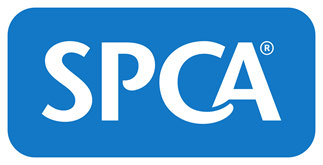
• Feed and water supply is a risk on board ships. (Hing et al., 2021) reviewed reports
from on board cattle exports from Australia to China between 2018 and 2019. They
found that, despite guidelines for export, issues with provision of food were
described in 43% of voyage summaries. Water supply issues were also described in
43% of voyage summaries, including leaking hoses, water being contaminated by
faeces, and instances where water supply systems failed entirely.
• There is sufficient evidence to indicate that sheep transported by sea suffer from
Act 1982
motion sickness (Santurtun et al., 2015, 2020; Santurtun & Phillips, 2018) There
should be investigation into this risk for cattle and recommendations for measures
on
to reduce motion sickness.
• Noise is an emerging animal welfare concern. Exposure to noise levels above 85dB
has been suggested to be stressful to farmed animals in lairage (Weeks, 2008).
Exposure to noise has been shown to have a significant impact on farm animal
welfare, and papers have suggested that careful consideration to noise should be
made before construction of the animal building/container (Brouček, 2014). A
submission from a farm animal export veterinarian in New Zealand noted that “The
noise of the fans was deafening, I had to wear ear protection at all times, and the
cattle were subjected to it for about 3 weeks, day and night” (Anonymous NZ
Veterinarian, 2021).
Can the key welfare issues be managed sufficiently using the current system?
19. The current system is a prohibition on the live export of cattle, sheep, goats and deer by sea.
We consider the continuation of the ban the only way to sufficiently manage the inherent
welfare issues associated with live export of livestock by sea.
20. The current system allows for the export of these animals by air. SPCA is concerned about
the export of farmed animals by air - handling, loading, transporting and unloading of
animals is known to have substantial effects on their welfare. However, these risks may be
able to be managed, primarily due to the shorter journey overall.
under the Official Inform
21. MPI clarified in the April 15th meeting that the ‘current system’ in this question refers to the
processes in place prior to the ban taking effect at the end of April 2023, i.e. the Livestock
Export by Sea: Guidance for Cattle document, official assurance programme SOPs and
Animal Welfare Export Certificates.
22. SPCA does not consider that the previous system was able to sufficiently manage the
inherent welfare issues associated with live export by sea, which is why we supported a ban.
Please refer to our 2021 submission to the Primary Production Select Committee.
Released
23. We highlight the following from the Heron Review, commissioned by MPI:
“The trade is
difficult to regulate, given it spans jurisdictions and the high seas and involves a myriad of
international agencies, regulators, and commercial players. It involves many participants,
6
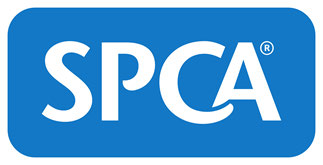 including veterinarians, maritime surveyors, stock handlers, ship’s crew, ship owners and
including veterinarians, maritime surveyors, stock handlers, ship’s crew, ship owners and
their agents, exporters, and various regulators. In such a context, there are no simple
solutions and there is no single body or agency with ultimate control. In addition, we note the
obvious: rules and regulations themselves cannot necessarily prevent tragedies and
accidents.”(Michael Heron QC, 2020)
24. SPCA notes that no guidance documents exist for the live export of sheep, goats, or deer.
Act 1982
What would you see as representing ‘higher’ standards of welfare for animals being
exported, and how would you practically improve welfare standards during export?
on
25. SPCA considers that the evidence does not support that high welfare standards are
achievable. However, if the repeal of the live export ban is predetermined, SPCA would
consider the following as necessary to improve welfare during and after live export:
• Limits on duration of voyages. SPCA advocates for a limit of 8 hours for all farmed
animal transport within New Zealand. Practically speaking, we would expect that
voyage limits from New Zealand, that would be capable of protecting welfare
sufficiently, would limit transport to air only.
• Regulate to allow only purpose-built ships to load animals. The age of these ships
should also be limited.
• Use more Animal-Based Measures (ABMs) to measure welfare on-board including
clear signs of poor welfare such as stress, pain, sickness, injuries, fatigue, body
condition score, cleanliness, lameness, behavioural signs etc. ABMs should be known
and used as welfare assessment tool by trained operators and animal handlers
(Broom, 2003; Ceballos et al., 2018). We note that the Heron Review found that
reports provided by exporters focused too much on mortality alone, and
recommended adding the following:
• changes in the weight and condition of the animals during the voyage;
• the extent and type of medical treatment administered on the voyage;
• the types and amounts of medicines that were administered;
• frequency of changing the deck ‘pad’; and
under the Official Inform
• other animal welfare indicators such as thermal comfort, palatability of
fodder and water, resting time per day, noise levels, air quality and comfort,
and the ability to experience positive social bonds.
• Independent observers, trained specifically in animal welfare (e.g. to a similar level
to warranted Animal Welfare Inspectors) must be required for all voyages.
• Additional veterinary coverage should be considered. One veterinarian may not be
sufficient to monitor all animals during the voyage
Released • Regulate to require cameras on board, covering all animal areas, with a live feed.
• Regulate to require additional contingency planning. New Zealand should have
mechanisms in place before approving the export of animals that allow the animals
7
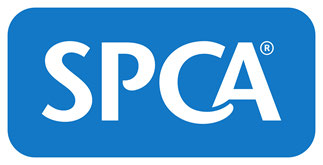
to return and be immediately unloaded in case of import refusal and when no
prompt solution is found in the importing country.
• Regulate mandatory hospital pens to separate sick and injured animals to ensure
that these animals can rest and receive the necessary treatment, and in case of
infectious diseases.
• Regulate a prohibition on the usage of electric goads to load animals, especially
given that all animals transported by sea face a myriad of other chronic, concurrent
Act 1982
and cumulative stressors (Grandin, 2015; Grumett & Butterworth, 2022).
• Regulate loading ramps. For example EU regulations require that vehicle ramp
on
angles should be no more than 20° for pigs, calves and horses, and no more than 26°
for sheep and cattle (Humane Slaughter Association, n.d.).
• Regulate to require ‘state of the art air conditioning systems’ (Grigg, 2022).
• Regulate a limit to ammonia levels (Phillips, 2008).
• Regulate the limits on pregnant cattle. Animals should not be transported if more
than 40% of their gestation period has passed. Lift the guidance into regulation that
cattle that are pregnant may not depart from New Zealand between 1 May and 31
October (inclusive) on any sea voyage.
• Regulate stocking density to allow sufficient space per cow for cattle to express
natural behaviours, maintain adequate lying times, freely access feed and water,
reduce aggressive interactions and non-aggressive lying disturbances. The minimum
pen area (m2/head) in the MPI guidance developed is insufficient; research suggests
at least 4.5 to 6 m2 per cow is required (Schütz et al., 2015).
• Review bedding requirements and regulate required bedding area to allow for
normal cattle lying behaviour. This may require the installation of drainage systems
on purpose-built ships.
• Enforce our animal welfare standards in destination countries, for example via
requesting equivalence in housing, transport and slaughter standards with
destination countries; by imposing sanctions if these aren’t met; and by sending MPI
officers to destination countries to check on farm, transport and slaughter facilities
under the Official Inform
in destination countries.
What level of enforcement of compliance would be appropriate?
26. Some of the above requirements should be placed into a new Code of Welfare and an
associated set of directly enforceable regulations with associated financial penalties issued
under s183 of the Animal Welfare Act. This may only be feasible to the extent that they can
apply within New Zealand – for example, around animal selection, staffing, installation of
cameras and loading requirements.
Released
27. Enforcing New Zealand standards during the journey and overseas would need to be
explored with international policy or MFAT officials. SPCA looks forward to understanding
more about how we can ensure our cattle experience similar welfare as expected by
8
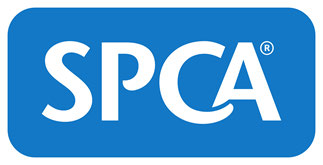
Minister McClay:
" the way we expect that animals have been treated in New Zealand, on the
water on the farm or the destination country should be the same — the same level of animal
health, animal welfare and animal husbandry.”(Desmarais, 2024).
28. Cameras, independent observers and more detailed monitoring (as above) would be
required, as would transparency to reassure the New Zealand public. Footage from cameras
and detailed journey reporting should be publicly available.
Act 1982
Can you envisage any implementation issues?
29. SPCA (and the Heron Review) acknowledges that regulating this industry is very difficult. We
on
consider that it is not practical to try to improve animal welfare to acceptable levels for
livestock export by sea.
30. Maintaining the ban while working on improving welfare standards for air export, and
extending standards to more species, would be a more efficient and practical use of New
Zealand’s animal welfare and verification/compliance expertise.
References
Adams, D. B. (1994). Transportation of animals and welfare.
Revue Scientifique et Technique de l’OIE,
13(1), 153–169. https://doi.org/10.20506/rst.13.1.760
Anonymous NZ Veterinarian. (2021).
Submission on the Animal Welfare Amendment Bill.
https://www.parliament.nz/resource/en-
NZ/53SCPP_EVI_115891_PP2427/3f9275012e56ee5fd5e145bbc0626c3ca58d8c45
Australian Department of Agriculture, F. and F. (2022).
Australian Standards for the Export of
Livestock. https://www.agriculture.gov.au/biosecurity-trade/export/controlled-goods/live-
animals/livestock/australian-standards-livestock
Australian Livestock Export Corporation Ltd. (2019).
Vessel heat stress technology trial program –
sheep 2019: static dehumidification trial report.
under the Official Inform
https://assets.ctfassets.net/8fjsq0xyf4sy/pIpJ1vWSGXY7XnZGhg3fK/b92458b4856a49320d0d8
3eb37dc166e/Dehumidification_trial_report.pdf
Banney, S., Henderson, A., & Caston, K. (2009).
Management of Bedding during the Livestock Export
Process .
https://www.mla.com.au/contentassets/2846c255a6954cf68a1337265e075744/w.liv.0254_fin
al_report.pdf
Broom, D. M. (2003). Causes of Poor Welfare in Large Animals During Transport.
Veterinary Research
Released
Communications,
27, 515–518. https://doi.org/10.1023/B:VERC.0000014210.29852.9a
Brouček, J. (2014). Effect of noise on performance, stress, and behaviour of animals.
Slovak Journal
of Animal Science,
47, 111–123.
9
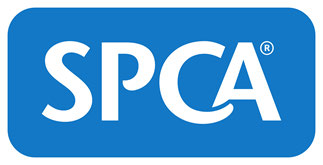
Caulfield, M. P., Cambridge, H., Foster, S. F., & McGreevy, P. D. (2014). Heat stress: A major
contributor to poor animal welfare associated with long-haul live export voyages.
The
Veterinary Journal,
199(2), 223–228. https://doi.org/10.1016/j.tvjl.2013.09.018
Ceballos, M. C., Sant’Anna, A. C., Boivin, X., Costa, F. de O., Carvalhal, M. V. de L., & Paranhos da
Costa, M. J. R. (2018). Impact of good practices of handling training on beef cattle welfare and
stockpeople attitudes and behaviors.
Livestock Science,
216, 24–31.
https://doi.org/10.1016/j.livsci.2018.06.019
Act 1982
Collins, T., Hampton, J., & Barnes, A. (2018).
Literature review of scientific research relating to animal
health and welfare in livestock exports.
on
https://www.agriculture.gov.au/sites/default/files/sitecollectiondocuments/animal/independe
nt-literature-review.pdf
Desmarais, F. (2024, April 6). “Essentially cruel”: Greens urge Govt to reconsider live animal exports.
1News. https://www.1news.co.nz/2024/04/06/essentially-cruel-greens-urge-govt-to-
reconsider-live-animal-exports/
Fisher, A. (2013, November 4). Can live animal export ever be humane?
The Conversation.
https://theconversation.com/can-live-animal-export-ever-be-humane-19804
Gold Standard animal exports back on the table. (2023, October 23).
Farmers Weekly.
https://issuu.com/farmersweeklynz/docs/fw_23-10_issuu/20
Grandin, T. (2015). How to improve livestock handling and reduce stress. In
Improving animal
welfare: a practical approach (pp. 69–95). CABI. https://doi.org/10.1079/9781780644677.0069
Grigg, N. (2022).
Animal Welfare Amendment Bill — Second Reading.
https://www.parliament.nz/en/pb/hansard-
debates/rhr/document/HansS_20220511_054540000/grigg-nicola
Griggs, K. (2016). Saudi deal part of NZ’s ongoing sheep export saga.
RNZ.
https://www.rnz.co.nz/news/on-the-inside/317265/saudi-deal-part-of-nz’s-ongoing-sheep-
export-saga
Grumett, D., & Butterworth, A. (2022). Electric shock control of farmed animals: Welfare review and
under the Official Inform
eth cal critique.
Animal Welfare,
31(3), 373–385. https://doi.org/10.7120/09627286.31.4.006
Hing, S , Foster, S., & Evans, D. (2021). Animal welfare risks in live cattle export from australia to
china by sea. In
Animals (Vol. 11, Issue 10). MDPI. https://doi.org/10.3390/ani11102862
Humane Slaughter Association. (n.d.).
Loading and Unloading Ramps. Humane Handling of Livestock.
Retrieved May 2, 2024, from https://www.hsa.org.uk/facilities/loading-ramps
Kevany, S. (2020, October 28). Exclusive: livestock ships twice as likely to be lost as cargo vessels.
Released
Guardian. https://www.theguardian.com/environment/2020/oct/28/exclusive-livestock-ships-
twice-as-likely-to-be-lost-as-cargo-vessels
Kukharenko, N., & Fedorova, A. (2018). The Effect of Long Transportation Stress on Young Calves
Born from Cows and Animal Ecology.
Ekoloji ,
27(106), 293–299.
10
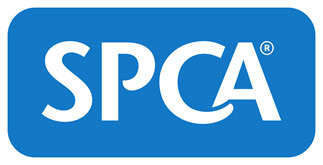
Michael Heron QC. (2020).
Review into the Maritime Safety Information Requirements for the Export
of Livestock by Sea. https://www.mpi.govt.nz/dmsdocument/42511-Review-into-the-Maritime-
Safety-Information-Requirements-for-the-Export-of-Livestock-by-Sea
Ministry for Primary Industries. (2020).
Livestock Export Review - Summary of submissions.
https://www.mpi.govt.nz/dmsdocument/44992/direct#:~:text=A%20total%20of%203351%20w
ritten,advocacy%20groups%2C%20individuals%20and%20veterinarians.
Ministry for Primary Industries. (2022).
ANIMAL WELFARE AMENDMENTBILL – DEPARTMENTAL
Act 1982
REPORT. https://www.parliament.nz/resource/en-
NZ/53SCPP_ADV_115891_PP3327/9fa82dc75deac2bdbeabc3e95e6abaf650823dfb
on
More, S., & Brightling, T. (2003).
LIVE.215 Minimising mortality risks during export of live goats by
sea from Australia.
https://www.mla.com.au/contentassets/9b221197a0a1469e80a2abb30bf76398/live.215_final
_report.pdf
New Zealand Treasury. (2019).
Guidance Note: Effective Consultation for Impact Analysis .
https://www.treasury.govt.nz/sites/default/files/2019-12/guidance-note-effective-
consultation-impact-analysis.pdf
Nielsen, S. S., Alvarez, J., Bicout, D. J., Calistri, P., Canali, E., Drewe, J. A., Garin‐Bastuji, B., Gonzales
Rojas, J. L., Gortázar Schmidt, C., Michel V., Miranda Chueca, M. Á., Padalino, B., Pasquali, P.,
Roberts, H. C., Spoolder, H., Stahl, K., Velarde, A., Viltrop, A., Winckler, C., … Herskin, M. (2022).
Welfare of cattle during transport
EFSA Journal,
20(9).
https://doi.org/10.2903/j.efsa.2022.7442
Owen, L. (2024, May 1). Hoggard defends “gold standard” live exports.
Checkpoint.
https://www.rnz.co.nz/national/programmes/checkpoint/audio/2018936556/hoggard-
defends-gold-standard-live-exports
Phillips, C. J. C. (2008) The welfare of livestock during sea transport. In
Long distance transport and
welfare of farm animals (pp. 137–156). CABI. https://doi.org/10.1079/9781845934033.0137
Phillips, C. J. C., & Santurtun, E. (2013). The welfare of livestock transported by ship.
The Veterinary
under the Official Inform
Journal,
196(3), 309–314. https://doi.org/10.1016/j.tvjl.2013.01.007
Primary Production Committee. (2024).
2022/23 Annual review of the Ministry for Primary
Industries—Hearing with the Minister for Biosecurity and of Food Safety and the Associate
Minister of Agriculture. Hansard Transcript. https://www.parliament.nz/resource/en-
NZ/54SCPRIP_EVI_e5d5797d-752d-47cb-83d1-
08dbff6cce5c_PRIP345/b39d3c0ae48183b597847782fbf9a3460efad110
Santurtun, E., Moreau, V., Marchant-Forde, J. N., & Phillips, C. J. C. (2015). Physiological and
Released
behavioral responses of sheep to simulated sea transport motions.
Journal of Animal Science,
93(3), 1250. https://doi.org/10.2527/jas.2014-8037
11
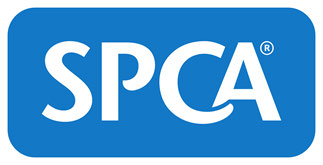
Santurtun, E., Navarro, G., & Phillips, C. J. (2020). Do antiemetics attenuate the behavioural
responses of sheep to simulated ship motion?
Applied Animal Behaviour Science,
223, 104924.
https://doi.org/10.1016/j.applanim.2019.104924
Santurtun, E., & Phillips, C. J. C. (2018). The effects of regularity of simulated ship motions on the
behaviour and physiology of sheep.
Applied Animal Behaviour Science,
204, 43–52.
https://doi.org/10.1016/j.applanim.2018.03.005
Schütz, K. E., Huddart, F. J., Sutherland, M. A., Stewart, M., & Cox, N. R. (2015). Effects of space
Act 1982
allowance on the behavior and physiology of cattle temporarily managed on rubber mats.
Journal of Dairy Science,
98(9), 6226–6235. https://doi.org/10.3168/jds.2015-9593
on
Scientific Committee on Animal Health and Animal Welfare. (2002).
The welfare of animals during
transport (details for horses, pigs, sheep and cattle).
https://food.ec.europa.eu/system/files/2020-12/sci-com_scah_out71_en.pdf
Scott, A. (2023, December 14). Exporters eye August for live trade reboot.
Farmers Weekly.
https://www.farmersweekly.co.nz/markets/exporters-eye-august-for-live-trade-reboot/
SPCA. (n.d.).
Live export of farmed animals by sea and air. Retrieved May 2, 2024, from
https://www.spca.nz/advocacy/position-statements/article/live-export-of-farmed-and-wild-
caught-animals-by-sea-and-air
SPCA. (2021).
Submission by the Royal New Zealand Society for the Prevention of Cruelty to Animals
Inc. On Proposed Changes to Ban Live Exports under the Animal Welfare Act 1999.
https://www.parliament.nz/resource/en-
NZ/53SCPP_EVI_115891_PP2503/d4278ba1a9c96ce8241013f4de7bddd5654db8e9
Tucker, C. B., Jensen, M. B., de Passillé, A. M., Hänninen, L., & Rushen, J. (2021). Invited review: Lying
time and the welfare of dairy cows.
Journal of Dairy Science,
104(1), 20–46.
https://doi.org/10.3168/jds.2019-18074
Weeks, C. (2008). A review of welfare in cattle, sheep and pig lairages, with emphasis on stocking
rates, ventilation and noise.
Animal Welfare,
17(3), 275–284.
https://doi.org/10.1017/S096272860003219X
under the Official Inform
The remainder of this submission is withheld pursuant to section 9(2)(ba)(i) of the OIA:
the making available of the information would be likely to prejudice the supply of similar
information, or information from the same source, and it is in the public interest that
such information should continue to be supplied.
Released
12
From:
s9(2)(a)
To:
9(2)(a)
Cc:
9(2)(a)
Subject:
Livestock export was discussed during Annual Review Debate yesterday arvo.
Date:
Wednesday, 22 May 2024 9:21:00 AM
https://videos.parliament.nz/on-demand?fullDay=False&parliament=54&id=9ec5e17e-e552-
4a0c-b68f-08dc79b78e94
s9(2)(a)
Private Secretary - Associate Agriculture I
Office of Hon Andrew Hoggard
Minister for Biosecurity I Associate Minister of Agriculture (Animal Welfare, Skills) I Minister for Food Safety I
Associate Minister for the Environment
Parliament Buildings I Wellington
Email s9(2)(a)
Act 1982
on
under the Official Inform
Released
From:
Fiona Duncan
To:
s9(2)(a)
Cc:
Carolyn Guy; Ministerials
Subject:
Supplementary Table for Livestock Export - summarised version (003)
Date:
Tuesday, 24 September 2024 4:28:29 PM
Attachments:
9(2)(f)(iv)
Hi s9(2)(a) – as discussed the summary table for ECO tomorrow is attached
Act 1982
on
under the Official Inform
Released
 From:
From:
s9(2)(a)
To:
s9(2)(a)
Subject:
Fw: **BAG** B24-0613 - Reinstating Livestock Exports by Sea
Date:
Friday, 11 October 2024 8:19:42 AM
Please note, this information is withheld pursuant to section 9(2)(f)
Attachments:
image001.jpg
(iv) - to maintain the constitutional conventions for the time being
Sub24-0108 - Reinstating livestock exports by sea.docx which protect the confidentiality of advice tendered by Ministers of
the Crown and officials.
Attached
Get Outlook for iOS
From: Ministerials <[email address]>
Sent: Thursday, October 10, 2024 4:06:50 PM
To: s9(2)(a)
Cc:s9(2)(a)
Act 1982
@mpi.govt.nz>; Ministerials <[email address]>; JJ
s9(2)(a)
@mpi.govt.nz>; s9(2)(a)
@mpi.govt.nz>;
s9(2)(a) @mpi.govt.nz>; s9(2)(a)
@mpi.govt.nz>
on
Subject: **BAG** B24-0613 - Reinstating Livestock Exports by Sea
Kia ora s9(2)(a)
Please find attached for Minister Hoggard:
B24-0613 - Reinstating Livestock Exports by Sea (PDF combined and Word)
Sub24-0108 - Reinstating Livestock Exports by Sea (PDF and Word)
B24-0613/Sub24-0108 - Reinstating Livestock Exports by Sea
For Minister Hoggard (Associate Agriculture)
This paper provides the Minister with an updated Cabinet paper (Sub24-0108 Reinstating
Livestock Exports by Sea) seeking agreement to reinstate livestock exports by sea; and undertake
targeted engagement on the technical and operational requirements to implement the updated
export process.
Date decision required:
11 October
Contact:
Fiona Duncan, 9(2)(a)
Ngā mihi,
Reuben Booth (he/him) | Ministerial Adviser
under the Official Inform
Minister al Services | Government Services | Public Affairs
Ministry for Primary Industries - Manatū Ahu Matua
Level 15 (West) | Charles Fergusson Building 38-42 Bowen Street | PO Box 2526 | Wellington 6140 | New
Zealand
Web: www.mpi.govt.nz
Out of Scope
Released
 From:
From:
Ministerials
To:
s9(2)(a)
Cc:
Ministerials; s9(2)(a)
Subject:
**BAG** AM24-1043 – Cover Aide Memoire: Sub24-0108
Date:
Thursday, 24 October 2024 9:00:55 AM
Attachments:
image001.jpg
AM24-1043 - Sub24-0108 - Reinstating livestock exports by sea (combined).pdf
AM24-1043 - Sub24-0108 - Reinstating Livestock Exports by Sea.docx
AM24-1043 - Sub24-0108 - Reinstating livestock exports by sea (combined).pdf
Sub24-0108 - Reinstating livestock exports by sea.docx
Sub24-0108 – Appendix Three – Climate implications of policy assessment Disclosure sheet.pdf
Sub24-0108 – Appendix Three – Climate implications of policy assessment Disclosure sheet.docx
Sub24-0108 – Appendix Four – Regulatory Impact Statement Policy approvals reinstating livestock exports
by sea.pdf
Sub24-0108 – Appendix Four – Regulatory Impact Statement Policy approvals reinstating livestock exports
by sea .docx
Please note, this information is withheld pursuant to section 9(2)(f)(iv)
- to
Kia ora s9(2) ,
maintain the constitutional conventions for the time being which protect
(a)
Act 1982
the confidentiality of advice tendered by Ministers of the Crown and
Please find attached for Minister Hoggard:
officials.
on
AM24-1043 – Cover Aide Memoire: Sub24-0108 - Reinstating Livestock Exports by Sea
(PDF combined and Word)
Sub24-0108 – Reinstating Livestock Exports by Sea (PDF combined and Word)
Sub24-0108 – Appendix Three – Climate implications of policy assessment Disclosure
sheet (PDF and Word)
Sub24-0108 – Appendix Four – Regulatory Impact Statement Policy approvals reinstating
livestock exports by sea (PDF and Word)
AM24-1043 – Cover Aide Memoire: Sub24-0108 - Reinstating Livestock Exports by Sea /
Sub24-0108 – Reinstating Livestock Exports by Sea
For Minister Hoggard
(Associate Agriculture)
This paper provides an updated version of the Minister’s Cabinet paper
Reinstating Livestock
Exports by Sea for him to lodge with the Cabinet Economic Policy Committee (ECO) for its
meeting on 6 November.
Contact:
Fiona Duncan, 9(2)(a)
Nga mihi,
s9(2)(a) (he/him) | Ministerial Adviser
Ministerial Services | Government Services | Public Affairs
Ministry for Primary Industries - Manatū Ahu Matua
Level 15 (West) | Charles Fergusson Building 38-42 Bowen Street | PO Box 2526 | Wellington 6140 | New
under the Official Inform
Zealand
Web www.mpi.govt.nz
Out of Scope
Released
 From:
From:
Ministerials
To:
s9(2)(a)
Cc:
Ministerials; s9(2)(a)
Subject:
**BAG** Sub24-0108 - Cabinet Paper Summary
Date:
Thursday, 31 October 2024 11:15:49 AM
Please note, this information is withheld pursuant to section 9(2)
Attachments:
image001.jpg
(f)(iv) - to maintain the constitutional conventions for the time
Sub24-0108 - Cabinet Paper Summary.docx being which protect the confidentiality of advice tendered by
Sub24-0108 - Cabinet Paper Summary.pdf
Ministers of the Crown and officials.
Kia ora s9(2)(a)
Please find attached for Minister Hoggard:
Sub24-0108 – Cabinet Paper Summary (PDF and Word)
Act 1982
Sub24-0108 - Cabinet Paper Summary
For Minister Hoggard (Agriculture)
on
Ngā mihi,
s9(2)(a) (he/him) | Ministerial Adviser
Ministerial Services | Government Services | Public Affairs
Ministry for Primary Industries - Manatū Ahu Matua
Level 15 (West) | Charles Fergusson Building 38-42 Bowen Street | PO Box 2526 | Wellington 6140 | New
Zealand
Web: www.mpi.govt.nz
Out of Scope
under the Official Inform
Released
 From:
From:
s9(2)(a)
To:
s9(2)(a)
Subject:
Sub24-0108 PDF
Please note, this information is withheld pursuant to section 9(2)(f)(iv)
Date:
Thursday, 31 October 2024 1:35:08 PM
- to maintain the constitutional conventions for the time being which
Attachments:
image001.jpg
protect the confidentiality of advice tendered by Ministers of the Crown
Sub24-0108 - Reinstating livestock exports by sea.pdf and officials.
Kia ora s9(2)(a)
Here is a PDF of Sub24-0108 .
Ngā mihi,
s9(2)(a) (he/him) | Ministerial Adviser
Act 1982
Ministerial Services | Government Services | Public Affairs
Ministry for Primary Industries - Manatū Ahu Matua
Level 15 (West) | Charles Fergusson Building 38-42 Bowen Street | PO Box 2526 | Wellington 6140 | New
on
Zealand
Web: www.mpi.govt.nz
Out of Scope
under the Official Inform
Released





















